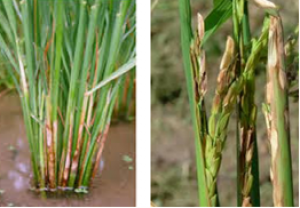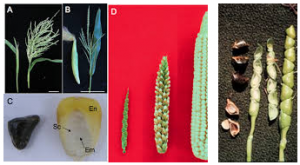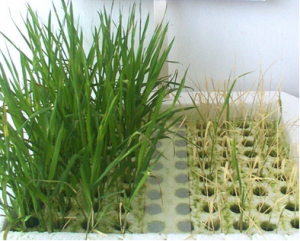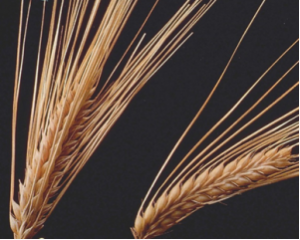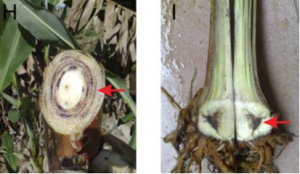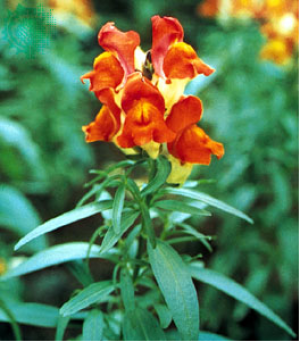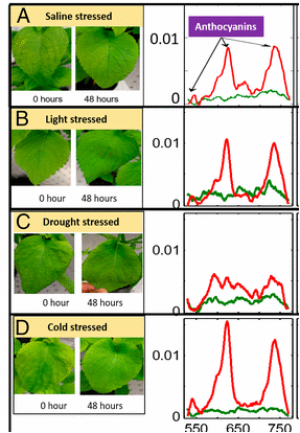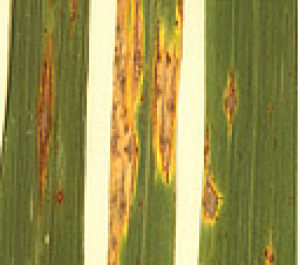Sheath blight disease (ShB), caused by the fungus Rhizoctonia solani Kühn, is one of the most destructive diseases of rice (Oryza sativa L.), causing substantial yield loss in rice. In the present study, a novel rice chitinase gene, LOC_Os11g47510 was cloned from QTL region of R. solani tolerant rice line Tetep and used for functional validation by genetic transformation of ShB susceptible japonica rice line Taipei 309 (TP309). The transformants were characterized using molecular and functional approaches.
Teosinte (Zea mays ssp. parviglumis) is the wild ancestor of modern maize (Zea mays ssp. mays). Teosinte contains greater genetic diversity compared with maize inbreds and landraces, but its use is limited by insufficient genetic resources to evaluate its value. A population of teosinte near isogenic lines (NILs) was previously developed to broaden the resources for genetic diversity of maize, and to discover novel alleles for agronomic and domestication traits.
Salt stress can severely reduce crop yields. To understand how rice (Oryza sativa) plants respond to this environmental challenge, we investigated the genes involved in conferring salt tolerance by screening T-DNA tagging lines and identified OsSta2-D (Oryza sativa Salt tolerance activation 2-Dominant). In that line, expression of OsSta2 was enhanced by approximately eightfold when compared with the non-transformed wild type (WT). This gene was highly expressed in the callus, roots, and panicles.
A number of bacterial, archaeal, and eukaryotic species are known for their resistance to ionizing radiation. One of the challenges these species face is a potent environmental source of DNA double-strand breaks, potential drivers of genome structure evolution. Efficient and accurate DNA double-strand break repair systems have been demonstrated in several unrelated radiation-resistant species and are putative adaptations to the DNA damaging environment.
Targeted genome editing with the CRISPR/Cas9 system has been used extensively for the selective mutation of plant genes. Here we used CRISPR/Cas9 to disrupt the putative barley (Hordeum vulgare cv. “Golden Promise”) endo-N-acetyl-β-D-glucosaminidase (ENGase) gene. Five single guide RNAs (sgRNAs) were designed for different target sites in the upstream part of the ENGase coding region.
Banana (Musa spp) is a fruit species frequently cultivated and consumed worldwide. Molecular markers are important for estimating genetic diversity in germplasm and between genotypes in breeding programs. The objective of this study was to analyze the genetic diversity of 21 banana genotypes (FHIA 23, PA42-44, Maçã, Pacovan Ken, Bucaneiro, YB42-47, Grand Naine, Tropical, FHIA 18, PA94-01, YB42-17, Enxerto, Japira, Pacovã, Prata-Anã, Maravilha, PV79-34, Caipira, Princesa, Garantida, and Thap Maeo), by using inter-simple sequence repeat (ISSR) markers.
Rosea1 (Ros1) and Delila (Del) co-expression controls anthocyanin accumulation in snapdragon flowers, while their overexpression in tomato strongly induces anthocyanin accumulation. However, little data exist on how Del expression alone influences anthocyanin accumulation. In tobacco (Nicotiana tabacum ‘Xanthi’), Del expression enhanced leaf and flower anthocyanin production through regulating NtCHS, NtCHI, NtF3H, NtDFR, and NtANS transcript levels.
Cellulose is the most abundant biopolymer on Earth and is a critical component for plants to grow and develop. Cellulose is synthesized by large cellulose synthase complexes containing multiple cellulose synthase A (CESA) subunits; however, how cellulose synthesis is regulated remains unclear.
Feeding a population of 9 billion in 2050 coupled with the changing climate and environmental stresses motivate us to develop advances in plant science and technology. We present a high-throughput plant phenotyping platform for detection of abiotic stress. The proposed Raman spectroscopic technique for high-throughput stress phenotyping and early stress detection in vivo improves sensitivity with the ability to interrogate individual molecules simultaneously in plants.
Highlight Modifications in glutamine synthetase OsGS1-2 expression and fungal pathogenicity underlie nitrogen-induced susceptibility to rice blast. Understanding why nitrogen fertilization increase the impact of many plant diseases is of major importance. The interaction between Magnaporthe oryzae and rice was used as a model for analyzing the molecular mechanisms underlying Nitrogen-Induced Susceptibility (NIS).


 Curently online :
Curently online :
 Total visitors :
Total visitors :
